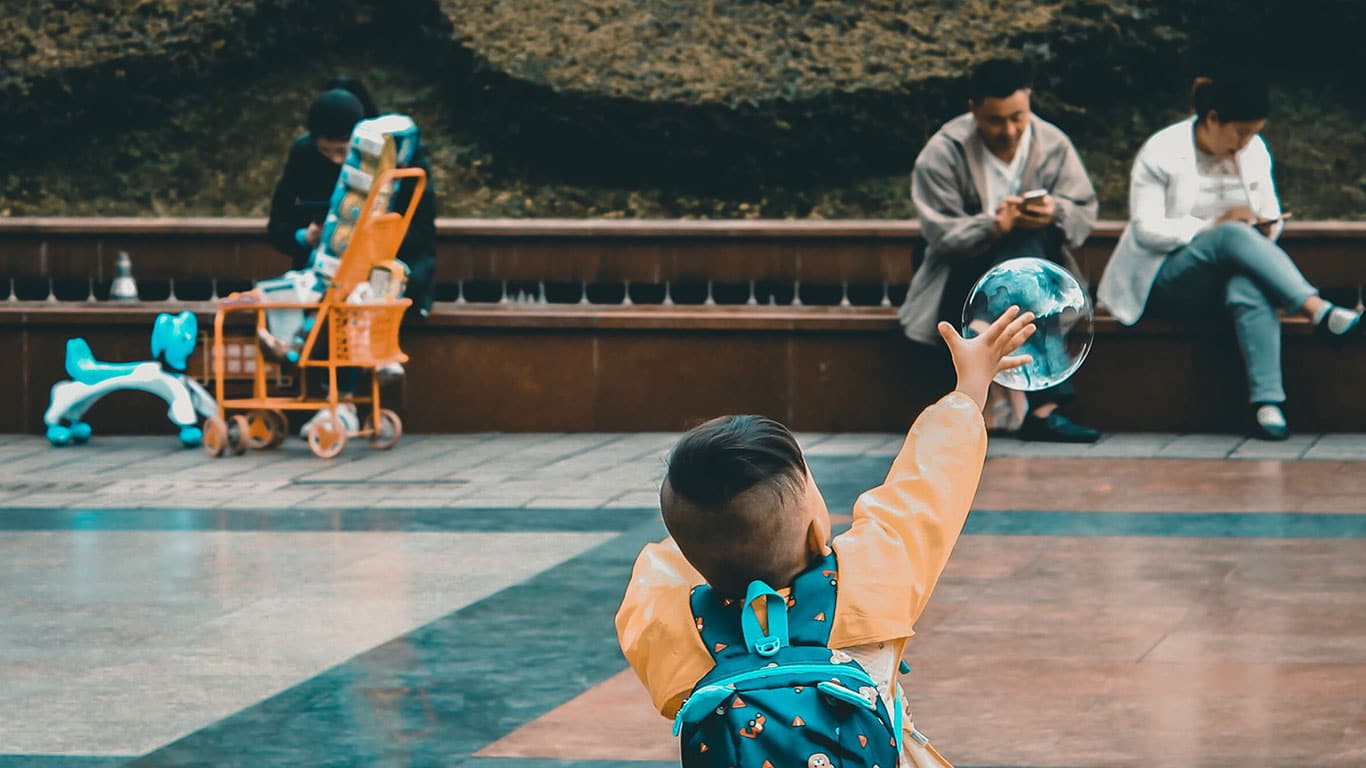The Influencer Bubble Is Real – Here’s Why

The influencer bubble is bursting.
The trend has seemed a bit ridiculous from the beginning, hasn’t it? A person starts publishing on YouTube/Instagram/Facebook, finds ways to amass thousands, or millions, of “followers” and then brands throw money at their feet for access to their audience and their endorsements. The practice of brands partnering with people who have influence is as old as capitalism itself and, when done well, it has been been effective, but this digital age has co-opted the term and twisted the concept of the “influencer” into a barely-recognizable mess of its former self.
The business of paying for influence
It’s like any other business: there’s a product or service that has value (the audience’s attention), there’s the buyers (brands) and there’s the sellers (people who have influence). For 100+ years that equation had been fairly stable. You could buy an audience from sellers like the New York Times or NBC. You could buy endorsements from people like Michael Jordan or Britney Spears. It was simple, relatively stable, and the people who held the highest concentrations of attention got rich.
Then the Internet happened, and complicated the whole equation. Viewers could now go directly to the source to watch their favourite on-screen personalities, so those people started to own the attention. These people were investing in their own media platforms, so rather than buying attention, they were building it themselves. And the media companies were left in the middle, struggling to maintain their relevance.
This is where the influencer bubble started
The brands’ media buyers were suddenly forced to buy ads in an ambiguous space without rate cards and sales teams, and no one knew how to price it. More than that, there was a wave of FOMO where every brand was convinced that everyone else knew something that they didn’t, so they absolutely must get on board with this influencer trend or risk getting left behind.
The bubble inflated rapidly when many of these partnerships worked, and some worked extremely well. I’ve personally witnessed a phenomenon that I call the Jillian Effect. That’s when @JillianHarris so much as whispers a recommendation to her adoring fans, and they eagerly flock to that retailer/restaurant/website to try her recommendation out for themselves. On one particular day she happened to share on her Instagram Story that she loved the Banana Coconut Latte at Giovane Cafe. For the next several days the lineups were so long, and the supply so short, that they finally chose to partner with her to publish the recipe so that her fans could make the now-famous drink at home.
In fact, in every version of influencer marketing there have been huge success stories. Nike with MJ, Pepsi with Britney, and Red Bull with, well, every extreme athlete, proved that the right message paired with the right influence can make a significant impact.
This is a special time, however, because the ubiquity of the tools and platforms means that anyone, anywhere can claim to have influence simply based on some accumulated numbers on a social media account, and the people working at the brands simply don’t have the time and resources to vet every one. The numbers that they are reviewing measure how many social media accounts follow another social media account. They do not measure who those people are (if they’re people at all), what their relationship is, why they’ve chosen to follow it, or what their interests are.
It’s no different than thinking that an airplane full of people gazing up at the flight crew should be treated the same as an audience at a private show with Justin Bieber. Both rooms contain a couple hundred people, both are listening to the person on the microphone, but imagine if both sources asked their respective audiences to pull out their phones and download a new app. I’ll go out on a limb and suggest that the Biebs would cause a whole lot more new app users than the flight attendants. This is how connecting actual influence with actual personalities and behaviours nets actual positive results.
But that’s not what advertisers are doing right now, for the most part. Our industry has created easy-to-calculate catch-all rates, similar to the old media buying model, that allow for none of that nuance. Some sources claim that the standard rate is as simple as $100 for every 10k followers. That massive over-simplification is just one of the signals of the bubble because it means that the significant majority of our media budgets aren’t going to sources of real influence. When we commoditize it, then it only makes sense that there will be legions of people who will artificially inflate these numbers, causing a massive over-supply of “influence”. Until now, the demand has matched the supply because (and this is the second bubble-signal) there has been a mania of demand that has followed. That mania has artificially inflated the amount that influencers are able to charge, and brought with it even more accounts claiming to have influence.
(Real) influence is still valuable
Before I get into the really dark numbers, I’ll offer this assurance: At the core of all of this is one singular truth that we’re all striving for. The truth is that great companies that are selling great products and investing in great relationships will always benefit from real influence. That influence is necessarily scarce. The people who impact my purchase decisions are different than the ones who impact yours, and that is fantastic news. It means that we’re not an army of robots who can be programmed to bend for the whims of our corporate overlords. It means that we seek out new and different, we respect brands with fresh ideas, and we are selective in where we place our trust. The good news is that this stuff will always be hard. The bad news is that we’ve pretended it’s not, and that has caused a lot of wasted cash.
Talk nerdy to me
When I was thinking about this piece, it was easy to default to the position that influencer marketing is a bubble, because of course it is. But that’s not constructive, and it’s not an effective way to make businesses decisions. Instead, I wanted to start from the beginning and ask: What is a bubble?
If you’ve watched the movie the Big Short, then you may remember this prescient line:
“There are specific identifiers that are entirely recognizable during the bubble’s inflation. One hallmark of mania is the rapid rise in the incidence and complexity of fraud.”
Run influencer marketing through that test and we’ve got a big old check mark. Some self-proclaimed influencers have been found to have as many as 75% fake followers, other accounts are paying for artificial engagement on their accounts to give the appearance of influence, and one study found that as many as 20% of paid influencers’ accounts were actually bots themselves, following and being followed by other bots.
Is there a rise in the incidence and complexity of fraud? Absolutely.
Rather than rely solely on Hollywood as my source of economic bubble-detection, I turned to Investopedia. It’s a Wikipedia-like site that helps to define and demystify investing concepts for laypeople. When I asked it about the signs of a bubble, it came back with 5 tell-tale steps that every bubble follows:
- Displacement
- Boom
- Euphoria
- Profit taking
- Panic
Step 1 is when the market gets enamoured by a new idea or technology, often to the point where alternatives are ignored. The flight away from print, display, and other forms of advertising towards influencers is a pretty clear sign that we’ve already lived through this one.
At first, prices creep up slowly, then as everyone starts to believe that they’re missing out there’s a mad dash to buy inventory at any price. Where 10 years ago paying someone to publish online was a novel concept, brands will now routinely shell out upwards of $250k for a single post on the biggest accounts.
This is where things get really crazy. Everyone is so convinced by what everyone else is saying that prices lose touch with reality. Think of the dot-com valuations in 2000, or the availability of mortgages in the US in 2008. We may be in the midst of this one as one company, whose whole business is the creation of “virtual celebrities”, just received investment from VCs at a valuation of $125 million.
This is where the smart money gets out. It’s nearly impossible to tell when the Profit Taking phase begins and ends, but when we look back at economic bubbles there are always a few leaders who start to see that the Emperor has no clothes on, and they cash in their chips. I’d argue that the brands that are now shifting to longterm relationships, partnerships, and high-value content creation are this bubble’s Profit Takers.
Where we all run for the exits. Just like the boom causes people to act irrationally, spending too much for too little, the panic causes people to disregard the real value that was at the core of the bubble and instead flee, leaving wreckage in their path.
The panic phase is what’s next for us all. Many up-and-coming content creators who are building real influence will be unfortunate casualties because what they’re selling has real value, but the market is cruel and it will turn its back on them.
For those of us who are paying attention, however, there will be some real value to be gained. Where a business relationship from our personality of choice may have been out of reach during the boom, when the panic happens, the doors will open for us to forge those real partnerships that benefit the buyer and the seller.
The most important part of the equation is the one that gets considered least in all of this, and that’s the user/viewer/guest/customer. During bubble times they are treated like points on a scoreboard. They are numbers to be packaged up, leveraged and sold. But when reality sets in and the market realizes that we can’t commoditize human trust the way that we might concentrated orange juice, that’s when we’ll all be forced to turn our attention back to those people and ask ourselves: How can we actually earn their trust?


